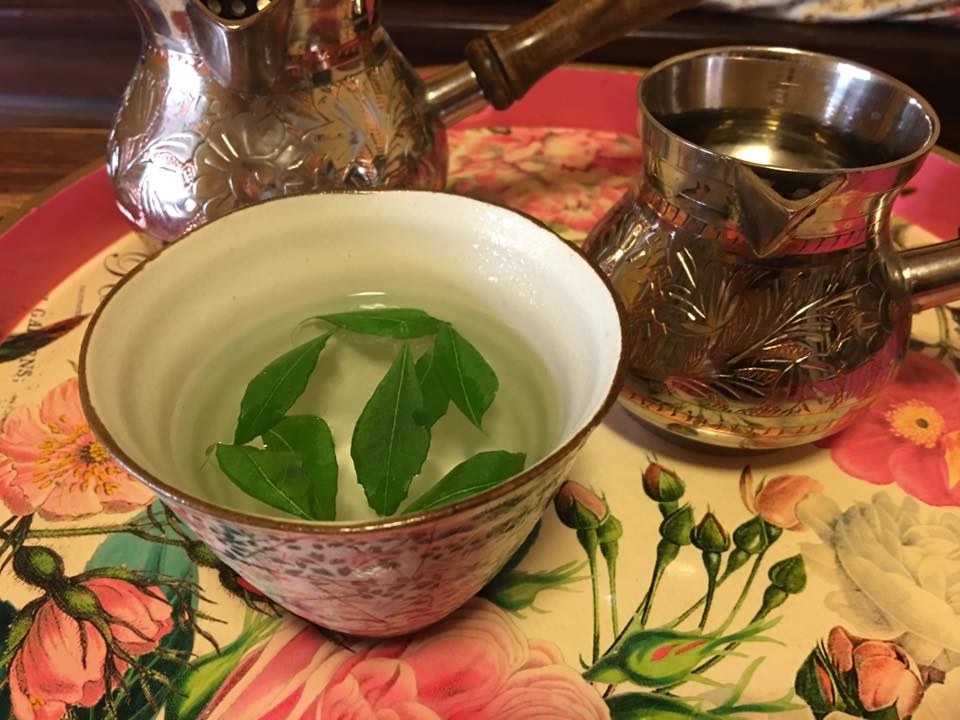Irritable Bowel Syndrome
August 20, 2018 3 min read

Irritable bowel syndrome – The Ayurvedic perspective and the benefits of Takra (medicated buttermilk)
Around one in five Australians experiences the unpleasant symptoms of irritable bowel syndrome (IBS) at some time. More women than men are prone to IBS, and symptoms tend to first occur in early adulthood.
IBS or spastic colon is a functional bowel disorder characterised by abdominal pain and changes in bowel habits. Other symptoms of IBS are
• Frequent bowel movement
• Diarrhoea
• Diarrhoea and constipation alternating
• A sensation that the bowels are not fully emptied after being to the toilet
• Bloating
• Gas and cramping
• Nausea
• Tiredness, weakness,
• Mucus in the stool
Looking at these symptoms we can only imagine what an impact this has on someone’s life. IBS can often lead to depression, anxiety (can you imagine you are driving on the freeway and you feel you need a Poo NOW).
It can affect relationships and make a person feel isolated.
According to Ayurveda the normal functioning of Jatharagni (main digestive fire/ enzymes located in the gastrointestinal tract) is affected in Irritable bowel syndrome.
Jatharagni is the vital essence of life. The normal functioning of Agni (digestive fire) largely depends on factors linked with the lifestyle of an individual .
IBS can be correlated to GRAHANI a disease mentioned by Mahadhava Nidana. Grahani is also a Sanskrit word which can be translated as duodenum.
Classical Reference of Grahani:
“GRAHANI so affected by the doshas either individually or in combination cause expulsion of food, undigested or digested, mixed with foul smelling, sometimes solid sometimes liquid accompanied with pain in the abdomen. Scholars of Ayurveda call this GRAHANI Roga” M.N/ 4:2-3
Nidana/ Causative factors
1. Agnidusti (low digestive fire) due to saririka and manasikabhavas (physical or emotional factors)
2. Ahara - unwholesome foods and wrong food combinations (Viruddhaharas), stale food (Vistambhi)
3. Sita Guna Ahara (cold foods)
4. Vataprakopa in Pakvasaya (increased Vata in colon)
Charaka explains C.S/Ci;15:56-57 that the functioning of the duodenum is not only to digest the food but to “hold on” to the food until it is digested, it then releases the food following it to pass into the colon where it is excreted under the influence of Apana Vayu.
Samprapti ghatakas/ Ayurvedic disease etio- pathogenesis
NIDANA- AGNI DUSHTI-GRAHANI DUSTHI- APAKWA/ AMA VIMUNCHANA- GRAHANI ROGA
Dosha: Vata, Pitta, Kapha (it can affect all 3 doshas)
Dushya: Rasa/ plasma and purisha/ stool
Srotas: Annavahasrotas, Purisavaha srotas
Srotodusti: Atipravrtti or sanga (excess flow or obstruction – diarrhoea or constipation)
Agni: Jatharagni
Adhisthana: Grahani
Roga Marga: Abhyantara
Chikitsa Sutra/ Ayurvedic treatment approach
Samanya chikitsa
Treatment of Grahani is reliant on treating the aggravated dosha or doshas; the treatment focuses on correcting Agni and strengthening the small intestine.
CHARAKA describes in C.S/ Ci;15:52 that aggravated doshas that have vitiated grahani, should be treated on the line of ajeerna/ indigestion.
CHAKRADATTA (Ayurvedic author) explains:
“In condition of Ama, first of all, one should abstain from food and take digestive remedy. Thereafter, at the end of the fasting, light and thinly liquid diet should be taken.”
In ama stage, anulomana dravyas or laxatives should be given. Vagbhata considers Aragvadha, Draksha and Trivrit being the best herbs for this. In nirama stage grahi herbs will give strength to the grahani. These Pachana herbs will stimulate the digestive fire and further digest ama along with Langhana therapy. These reducing therapies will reduce the production of ama and eliminate that ama which is already in the body.
1. Deepana/ Pachana (AMA Pachana)
To increase agni formulations such as Pippalyadi churna, Marichadi Churna (for Vata), Bhunimbadi churna (for Pitta) and Shunthyadi churna (for Kapha) are prescribed.
2. Langhana (light diet)
3. Snehana/ Svedana
4. Shodhana treatment (Panchakarma)
Vamana – if AMA is in the Amashaya
Virechana – if AMA in Pakvashaya with eranda thailam or tilvaka ghrita
Basti – correct if ruksha/ drying in the colon.
5. Shamana treatment, in Nirama stage use grahi herbs giving strenght to the Grahani/ Duodenum. Formulations such as Dashamuladya Ghrta, Panchamuladya Ghrta, Madhwarishta, Mustaristham…
6. Apathya Ahara Vihara
• Avoid excess water
• Staying late at night
• Suppressing of natural urges
• Incompatible food
• Exposure to excess sun/ heat
• Avoid caffein and fizzy drinks
7. Pathya Ahara Vihara such as buttermilk and ghee
8. Rasayana / Rejuvenation treatment
TAKRA is buttermilk, it is easy digestible, stimulates and strengthens the digestive fire. Takra is also sroto suddhi (cleanses the bodily channels). Best when mixed with curry leaves.
Charaka describes this in CS. Ci 15:117-121
He who habitually consumes buttermilk does not suffer from diseases any time, diseases burnt (cured) by buttermilk do not recur; just as amrta (nector) is for the good of the gods, so is buttermilk for men in this world.” (B.B. IV:45) “
For a patient suffering from grahani-dosha, buttermilk is an excellent drink because it stimulates the power of digestion,
If you are suffering from IBS or other digestive complaints, Ayurveda has treatment options available to suit your individual need.
For more information or consultation enquiry please email: info@lakshmiayurveda.com.au
We love to hear from you.
Your Lakshmi Ayurveda team.
Subscribe
Sign up to get the latest on sales, new releases and more …

